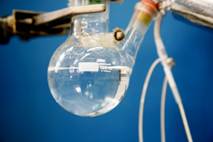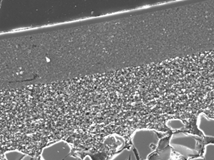|
Short technical description
Microporous membranes are being synthesized by methods involving wet-chemical preparation of aqueous nanoparticle suspensions followed by slip-casting or spin-coating techniques on porous rigid substrates. The so prepared layers are finally sintered to elevated temperatures where they are transformed into a nanoporous oxidic layer with a thickness of a few μm. Though an additional process the pores of the membranes may be further modified either by wet-impregnation or by gas phase deposition techniques such as CVD or plasma deposition, in order to achieve more specific and selective interactions. Gas separation is achieved either due to variations in molecular velocity (Knudsen diffusion) or in molecular size (molecular sieving) or due to selective chemical interaction between the membrane surface and one of the components of the mixture to be separated.
Indicative Applications (Social Driver: Energy)
Separation of hydrogen from hydrocarbon or carbon dioxide mixtures in order to enhance the efficiency of the steam reforming process in natural gas based power generators.
Cooperations
Research activities on this topic are conducted in cooperation with the Laboratory of Chemical Technology of the Chemical Engineering Department at A.U.Th. and with the Laboratory of Membrane Technology of the National Center for Scientific Research “Demokritos”
Indicative publications
Microporous and Mesoporous Materials 99, 176-180, 2007
Microporous and Mesoporous Materials 132, 276-282, 2010
Back |


A four layer asymmetric membrane system with gradually reduced pore size from 500μm to 5 nm. |


